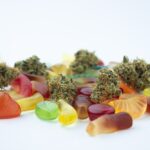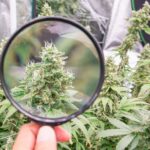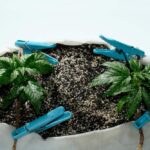The Best Fluffy Pancakes recipe you will fall in love with. Full of tips and tricks to help you make the best pancakes.
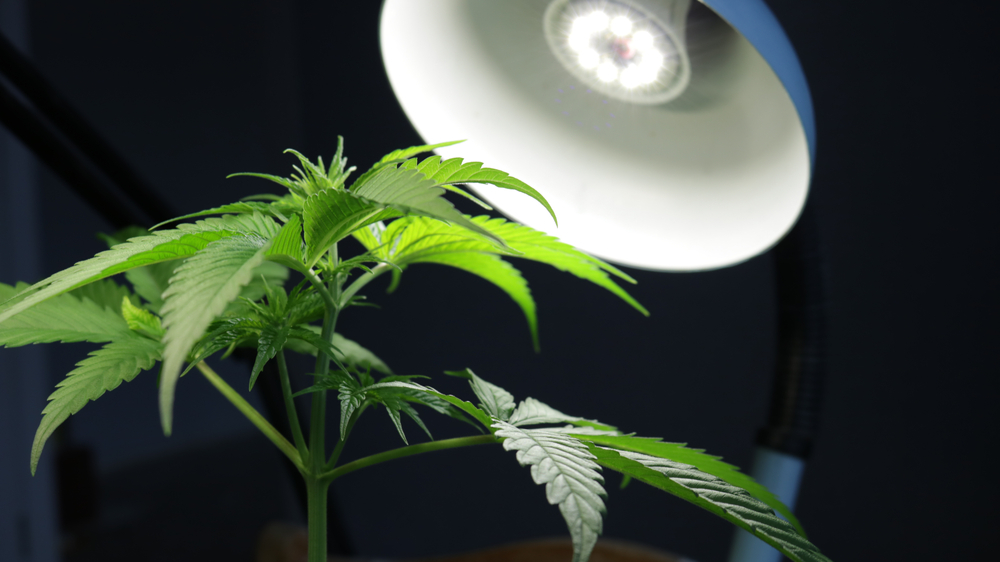
What is the perfect DLI for autoflowers?
Getting the light right is everything when it comes to growing quality autoflowers. If you’re new to growing, you’ve probably heard about PPFD, PAR, and DLI — and maybe even got them all tangled up. But when you’re aiming for dense, resin-loaded buds from autoflowers, DLI (Daily Light Integral) is one of the most useful measurements to work with. It gives you a total picture of how much usable light your plants receive per day.
As a breeder and grower who’s spent years fine-tuning autoflower environments, I can tell you this: dialing in the perfect DLI at each stage of your plant’s life is how you push genetics to their full potential. This guide will walk you through exactly how I do it — from understanding DLI, setting up lights, reading charts, and avoiding rookie mistakes. Let’s get into it.
Understanding DLI and why it matters for autoflowers
What is Daily Light Integral (DLI) and how is it calculated?
DLI is the total amount of Photosynthetically Active Radiation (PAR) that your plants absorb in a 24-hour period. Think of it like a daily light calorie count. While PPFD (Photosynthetic Photon Flux Density) tells you how much light is hitting your canopy at a single moment, DLI adds that up over time.
DLI is calculated by this formula:
DLI = (PPFD x hours of light per day x 3600) / 1,000,000
The result is given in mol/m²/day, which is short for moles of light per square meter per day. I know, sounds technical — but you don’t need to be a lab tech to figure it out. These days, most PAR meters or light apps will calculate DLI for you based on your light intensity and schedule.
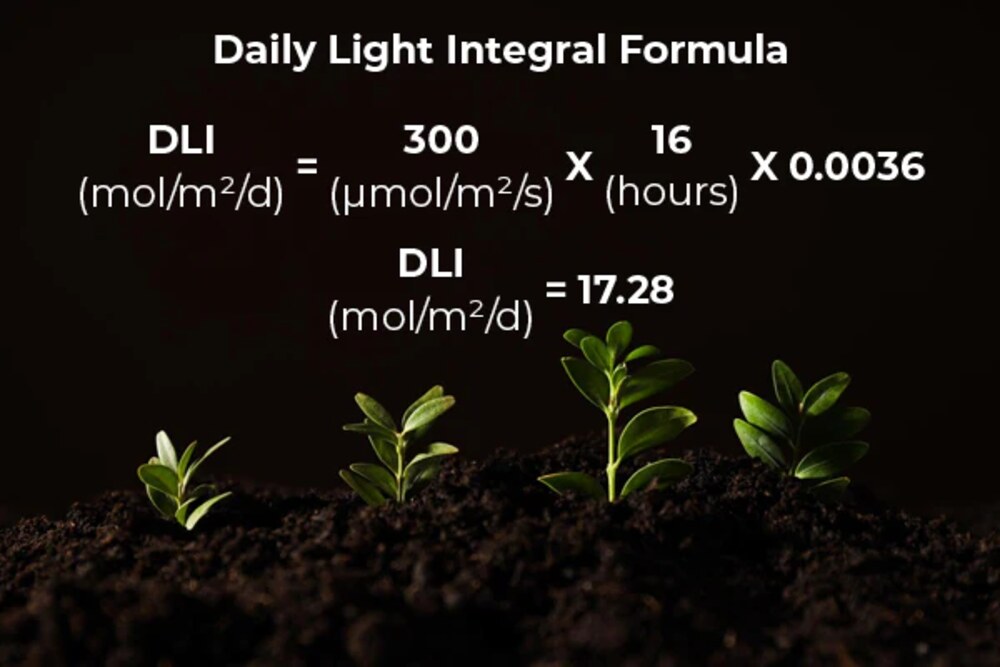
DLI vs PPFD vs PAR: What’s the difference and relevance?
Let’s clear up the confusion:
- PAR is the light spectrum between 400–700nm that plants use for photosynthesis.
- PPFD is how intense that PAR light is at a specific spot, measured in µmol/m²/s.
- DLI is the total amount of that light your plant receives over a full day.
Think of it this way:
- PAR is the type of food.
- PPFD is how fast you’re feeding it.
- DLI is how much food your plant eats in a day.
You want your autoflowers to eat enough — not too little, not too much — and DLI is how you measure that.
Why autoflowers need a tailored DLI strategy
Autoflowers are a different beast compared to photoperiod strains. They don’t wait for you to flip the light schedule to start flowering. Instead, they work on a fixed timeline from seed — usually finishing in 8–12 weeks.
Because they grow and flower at the same time, autoflowers need a DLI strategy that supports both phases simultaneously, especially in the vegetative and early flower stages. If you give too little light, they stretch and underperform. Too much? They stress, curl, and stall out.
That’s why hitting the right DLI — at the right stage — is one of the most important things you can do to get those chunky colas you’re after.
Recommended DLI values by growth stage
Seedling stage: low-DLI basics (10–15 mol/m²/day)
In the first 10 days or so, your seedlings are fragile. They’re not ready for intense light — in fact, blasting them with high PPFD will just stress them out and stunt growth.
This is where a DLI of around 10–15 mol/m²/day is ideal. I usually keep my light at a lower wattage or higher above the canopy, around 150–250 PPFD for 18–20 hours a day. That gives your seedlings enough energy to build strong roots and start true leaves without frying them.
Vegetative stage: ramping up to 20–40 mol/m²/day
Once those first true leaves come in, your autoflowers hit their growth stride. Now they need more energy to build stems, leaves, and future bud sites. This is when I increase the DLI to between 20–40 mol/m²/day.
This usually means raising the PPFD to 300–600 µmol/m²/s, still keeping that 18–20 hour light cycle. I also start lowering the light bit by bit to increase intensity, while keeping an eye on leaf temperature and posture. If your leaves are praying up, you’re in the sweet spot.
Flowering stage: pushing 40–60+ mol/m²/day for optimal bud yield
When flowering kicks in — usually around week 4–5 — you want to give your autoflowers all the energy they can handle without overdoing it. This is where I crank up the DLI to between 40–60 mol/m²/day, depending on the strain and how well it’s responding.
That typically means PPFD levels of 600–900 µmol/m²/s. Some robust autos can handle even more, but I always let the plant tell me. If buds are swelling, leaves are upright, and pistils are forming fast, your DLI is right where it needs to be.
How to achieve the ideal DLI: practical setup insights
Choosing and measuring PPFD to hit target DLI (using PAR meters/apps)
You can’t manage what you don’t measure. That’s why I always recommend using a PAR meter or reliable smartphone app (like Photone) to check your PPFD across the canopy.
Once you’ve got your PPFD, just multiply it by the hours your lights are on to estimate DLI. Here’s a cheat table:
- 200 PPFD for 20 hrs = ~14 mol/m²/day
- 400 PPFD for 20 hrs = ~29 mol/m²/day
- 600 PPFD for 20 hrs = ~43 mol/m²/day
- 800 PPFD for 20 hrs = ~57 mol/m²/day
Measure at plant-top level and take readings from multiple spots to get an average — that way your DLI estimate is accurate.
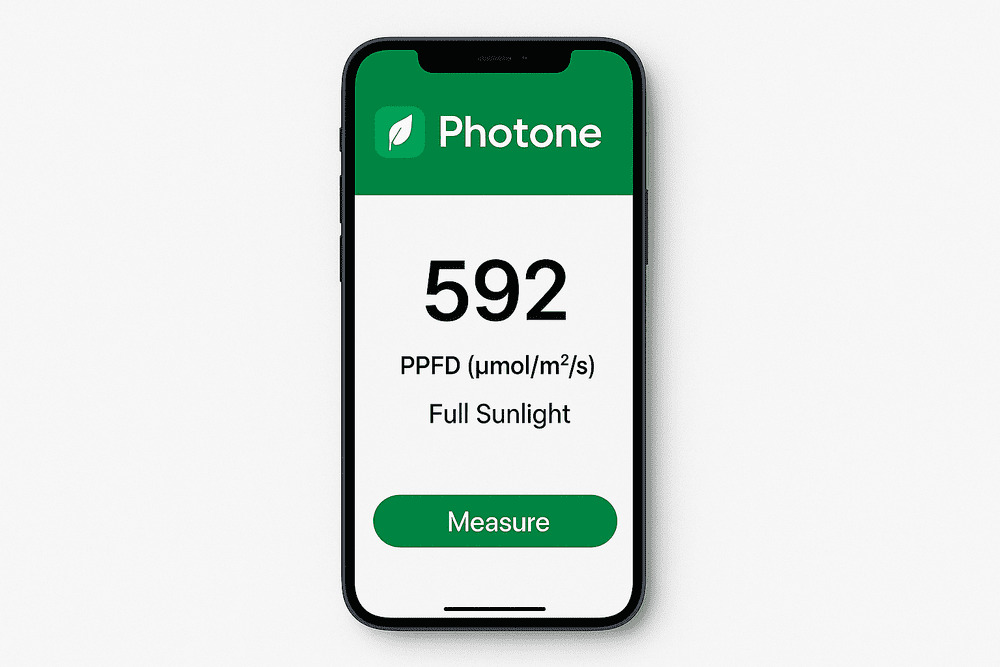
Optimizing light duration – 18/6, 20/4 and full-spectrum LEDs
Autoflowers thrive under longer light cycles. I personally run a 20/4 light schedule (20 hours on, 4 off) throughout the entire grow. This gives me higher DLI without maxing out PPFD and risking light stress.
Full-spectrum LEDs are perfect for this, especially those that mimic natural sunlight — they hit all the wavelengths your plants need. If you’re using HPS or CMH, you can still grow great buds, but you’ll need to watch heat levels closely.
Adjusting light height, adding CO₂, avoiding light stress
I always adjust light height to keep PPFD in the right zone for each stage — seedlings might be 30 inches away, while flowering plants could be as close as 12–18 inches.
Adding CO₂ can help plants handle higher PPFD and push yields, but only if your setup is sealed and you’re dialing in temperature and humidity too. If not, skip the CO₂ — it’s not magic by itself.
Too much light leads to:
- Leaf tacoing
- Yellow or pale upper growth
- Bleached buds
If you see these, back off the PPFD or shorten the light hours slightly.
Real-world autoflower DLI charts and experiences
Sample DLI/PPFD charts based on 20-hour light schedules
Here’s a quick reference I use when setting up:
| Growth Stage | Target DLI (mol/m²/day) | PPFD for 20hr Light |
| Seedling | 10–15 | 150–250 |
| Vegetative | 20–40 | 300–600 |
| Flowering | 40–60+ | 600–900 |
Remember: these are ballpark numbers. Your strain, light type, and grow room conditions all affect results.
Grower insights: common mistakes and lessons learned
Here’s what I’ve learned the hard way:
- Don’t chase high DLI numbers blindly. More isn’t always better.
- Always start low and ramp up.
- Keep canopy even — uneven DLI leads to larfy buds below.
- Use light diffusers or tilt lights to reduce hot spots.
- Never forget the dark period — even autos need rest.
One time I ran a new light too close with no adjustment — crisped the top colas. Lesson learned: intensity without context can ruin your run.
When to increase intensity vs when to back off
You increase intensity when:
- Leaves are upright and green
- Growth is vigorous
- Buds are forming fast
You back off when:
- Leaves curl, bleach, or lose color
- Plants droop or stall
- You’ve hit late flower and want to preserve terpenes
Listen to your plants — they speak light fluently.
Maximizing yield through DLI monitoring and adjustment
Weekly tracking and adjusting DLI across your grow cycle
Every week, I log:
- PPFD at canopy height
- DLI based on light hours
- Visual signs from plants
This helps me spot trends early — if growth slows or leaves react, I adjust DLI up or down. Keeping a journal is underrated. It turns guesswork into strategy.
Signs your plant is getting too much or too little DLI
Too much DLI:
- Leaves bleach or burn
- Buds appear crispy or foxtailed
- Growth stalls mid-flower
Too little DLI:
- Stretchy stems
- Small bud sites
- Slow leaf development
Catch these signs early and tweak your setup — even small changes in height or hours can fix the issue.
Tweaking environmental factors: CO₂, temperature, humidity
Once your DLI is dialed in, you need to match your environment. Here’s what I shoot for:
- Veg: 24–28°C, 60–70% RH
- Flower: 22–26°C, 45–55% RH
- CO₂: 1000–1200 ppm (if sealed)
High DLI with poor VPD (vapor pressure deficit) just stresses plants. Sync your airflow, temps, and RH with your light — it’s all connected.
Conclusion
Finding the perfect DLI for autoflowers isn’t about one magic number — it’s about reading your plants and giving them exactly what they need at the right time. You now know how DLI works, how to calculate it, how to adjust your lights and environment, and how to interpret what your plants are telling you.
Start small, measure everything, and don’t be afraid to experiment. Autoflowers move fast, but if you dial in DLI at each stage, they’ll reward you with dense, trichome-loaded flowers and short turnaround times.
Trust the numbers, trust your instincts, and trust your plants — they’ll show you the light.

